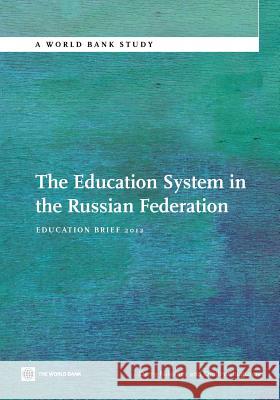The Education System in the Russian Federation: Education Brief 2012 » książka
The Education System in the Russian Federation: Education Brief 2012
ISBN-13: 9780821395141 / Angielski / Miękka / 2012 / 96 str.
This Education brief is intended for non-Russian researchers willing to get familiar with Russian education system and more generally for all those involved in education and education policy. It does not represent exhaustive information on Russian education system and all problems and challenges existing there, but provide a snapshot briefly describing its main features. Education brief - 2012 retains its main special feature which is the combination of statistical data and qualitative information to describe the organization and functioning of education system in the Russian Federation. The report provides an up-to-date array of indicators to measure the current state of education in the country. The indicators provide information on the human and financial resources invested in education, on how education and learning subsystems operate and evolve. The analytical parts of the report examine key problems and challenges faced by education system administrators and policymakers in education sphere. The report has the following structure. The opening section provides an overview of education system in the Russian Federation and briefly reviews the most evident emergent trends. Sections 2 through 5 are devoted to description of education system by level. The sections are presented in accordance with the following structure, namely by ascending order of educational level; the information in each section is presented in a progression from the most general to the most specific information. First, data on the current state of education system is provided; it includes data on the human and financial resources allocated to education, describes the network of educational institutions across the country and shows regional disparities concerning their spending on education. Next in each section key problems and challenges are examined; the focus is mainly made on access and quality of educational services. Third, information on recent and ongoing reforms in education sphere is presented; it looks on each subsector separately and defines features typical for each of them. Fourth goes the policy options and analysis of what can be improved in Russian education sphere. And, finally, section 6 is devoted to life-long learning. First, the focus is made on the condition and development trends in that sphere. Then it goes on with examining the state policy, staff training including financing and coverage in that area, and socially deprived groups of people. It ends up with provision of policy options and possible measures for improvement.











